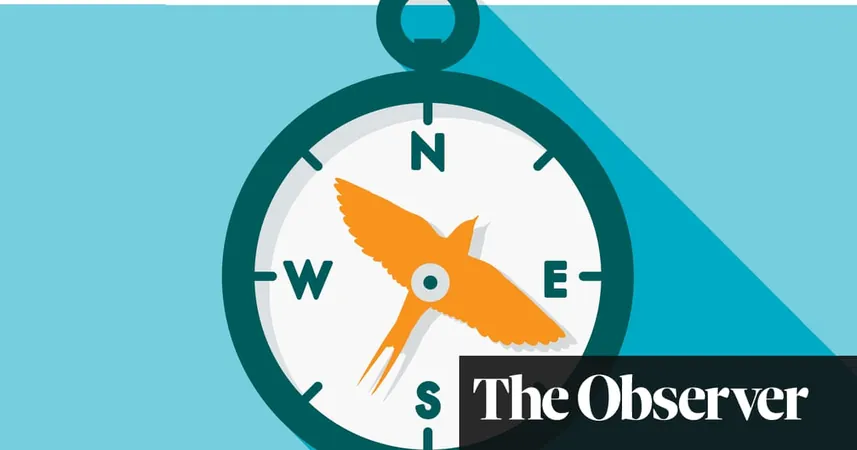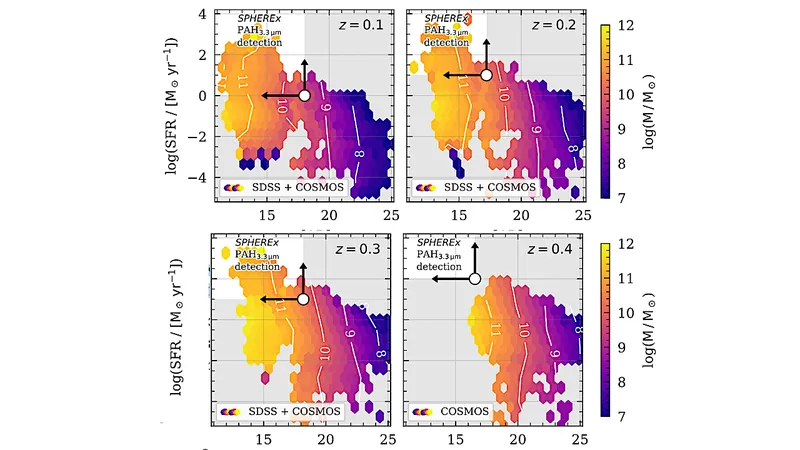
Unlocking Nature's Secrets: How Quantum Mechanics Powers Migrating Birds' Incredible Navigation Skills
2025-03-23
Author: John Tan
Introduction
As spring ushers in blooming flowers and the uplifting sounds of nature, the sweet trills of chiffchaffs and wheatears signal the return of migratory birds from their winter retreats. These remarkable creatures embark on journeys that span thousands of kilometers, often returning to their breeding grounds with astonishing precision—sometimes to within mere centimeters of their intended location. While many envision vast flocks of geese or mesmerizing murmurations of starlings during migration, the truth is more solitary and enigmatic. According to Miriam Liedvogel, director of Germany's Institute of Avian Research, "The majority migrate at night and by themselves, so they have no one to follow."
Historical Context
Liedvogel's lifelong fascination with birds has led her to delve deep into the mysteries of their navigation. Historically, humans have pondered this enigma, with Aristotle even theorizing that certain birds changed species during winter. Fortunately, scientific breakthroughs have since dispelled such myths, shedding light on the reality that 95% of migrating birds journey alone during the night, relying on inherited instincts and sophisticated biological mechanisms.
Quantum Mechanics and Navigation
One of the most captivating theories about how birds navigate is the idea that they use the Earth’s magnetic field—an ability underpinned by quantum mechanics. This was proposed in 1978 by biophysicist Klaus Schulten and his team at the Max Planck Institute. Their groundbreaking insight into how birds detect magnetic fields involves the behavior of electrons. When electrons gain energy, they can move between molecules, creating "free radicals." These radicals have a property known as "spin," which can be influenced by external magnetic fields, enabling birds to sense their environment in a way that still baffles scientists.
Role of Cryptochrome 4
Recent research has highlighted an essential protein called cryptochrome 4, found in the eyes of migrating birds, as a key player in this navigation process. Peter Hore, a chemistry professor at Oxford University, has studied the quantum properties of cryptochrome 4, demonstrating that robins have a heightened sensitivity to magnetic fields compared to non-migratory birds like chickens. This suggests a remarkable evolutionary adaptation that allows migratory birds to effectively harness the Earth's magnetic signals, despite the seemingly insubstantial strength of these fields.
Importance of Light
Moreover, researchers have noted that the presence of light is crucial for birds to sense the magnetic field. Cryptochrome proteins absorb specific wavelengths of light necessary to activate this magnetic sensing mechanism. Liedvogel's continued investigations into cryptochrome genes have revealed fascinating variations unique to migratory species. Their findings suggest evolutionary optimization for animals relying on these quantum biological systems.
Limitations of Quantum Sensing
However, the strength of these quantum senses may have inherent limitations. Recent studies have introduced the idea that Heisenberg's uncertainty principle imposes boundaries on how sensitive birds can be in their navigation—indicating that even nature has its constraints, despite its ingenuity.
Challenges from Urbanization
Birds are also facing new challenges in navigating amidst increasing urban electromagnetic noise, which can disrupt their natural ability to sense magnetic fields. Current experiments focus on determining the frequency thresholds at which these disruptions occur.
Conclusion
The astonishing capabilities found in migratory birds highlight not only nature's ability to innovate but also the profound intersection of biology and physics. As researchers continue to untangle these secrets, the humble reputation of "bird brains" is set for a remarkable rebranding, reflecting the complexities and sophistication of avian intelligence that rivals our own technological advancements. Indeed, it seems that nature's quantum technology may well be a step ahead of us all!


 Brasil (PT)
Brasil (PT)
 Canada (EN)
Canada (EN)
 Chile (ES)
Chile (ES)
 Česko (CS)
Česko (CS)
 대한민국 (KO)
대한민국 (KO)
 España (ES)
España (ES)
 France (FR)
France (FR)
 Hong Kong (EN)
Hong Kong (EN)
 Italia (IT)
Italia (IT)
 日本 (JA)
日本 (JA)
 Magyarország (HU)
Magyarország (HU)
 Norge (NO)
Norge (NO)
 Polska (PL)
Polska (PL)
 Schweiz (DE)
Schweiz (DE)
 Singapore (EN)
Singapore (EN)
 Sverige (SV)
Sverige (SV)
 Suomi (FI)
Suomi (FI)
 Türkiye (TR)
Türkiye (TR)
 الإمارات العربية المتحدة (AR)
الإمارات العربية المتحدة (AR)